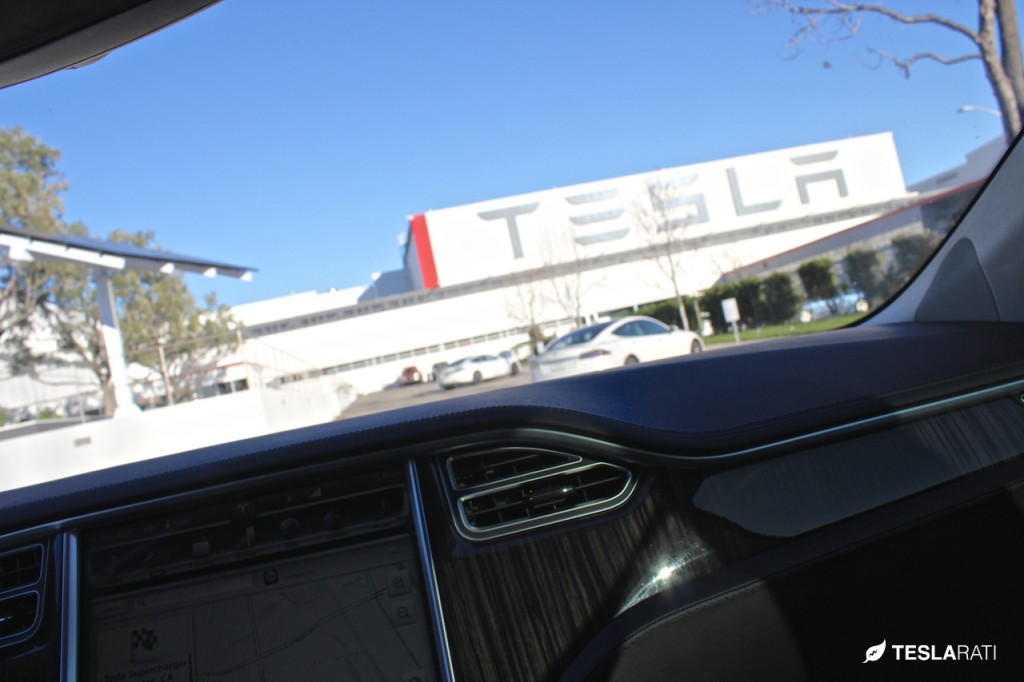News
Tesla implicated in foreign worker scandal after reports of visa violations
The San Jose Mercury finds that up to 140 low wage workers were used to build the new Tesla paint shop at the Fremont factory. They were supplied with phony B1/B2 visas by foreign companies.
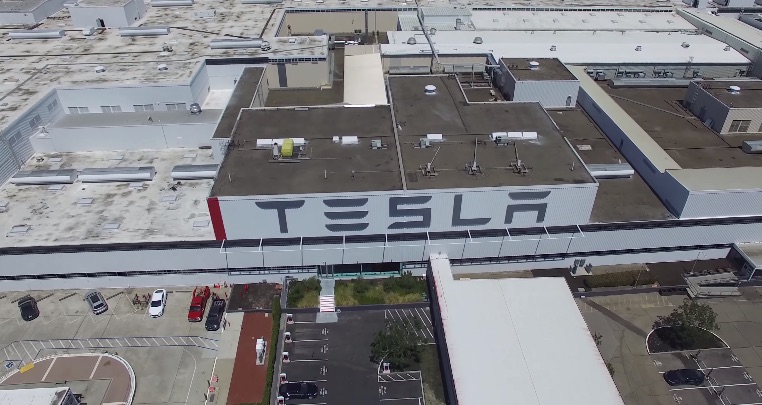
Updated: Tesla has issued a response to the story which can be seen here.
Tesla is justly proud of its new state-of-the-art painting facility capable of scaling up to 500,000 vehicles per year at the Fremont factory, but a report coming from the San Jose Mercury published on May 15 says that underpaid foreign workers contributed to the construction of the paint shop violating terms of their B1/B2 visas.
The Mercury began its investigation after Gregor Lesnik, a native of Slovenia who worked on the expansion of Tesla’s multimillion dollar Fremont factory paint shop in 2015, filed suit against Tesla and several other defendants. Lesnik was seriously injured while working on the paint shop project after slipping on loose tile and falling three stories before breaking both legs, ribs, and sustaining a concussion.
The newspaper reports that in 2014, Lesnik was an unemployed electrician living with his mother in Velenje, Slovenia. His girlfriend was expecting their first child and money was tight. He saw an ad seeking workers placed by ISM Vuzen, a construction company located in Slovenia. Vuzem provides teams of Eastern European workers to build manufacturing plants in Europe and the U.S. Among its clients are Mercedes-Benz, Toyota, Volkswagen, Ford, and Saab.
In March, 2015, Tesla selected Eisenmann, a German-based manufacturer of industrial systems, to expand the Fremont paint shop. Eisenmann claimed it was the most valuable contract in its history at $100 million. Soon it began hiring subcontractors to fill out the work force for the project. It turned to Vuzen for some of those workers.
Vuzen helped Lesnik apply for a US visa. Eisenmann assisted. Robert Keller, its US purchasing manager based out of Chicago, was listed as Lesnik’s U.S. contact. After Lesnik filed his lawsuit, Eisenmann denied that it had any legal responsibility for him.
US immigration officials were told that Lesnik was a supervisor with specialized training who would be working at a paint shop for a BMW factory in South Carolina. Keller told INS in a letter that Lesnik was a “supervisor of electrical and mechanical installation. His assignment will involve multiple border entries,” Keller wrote, “but in no way adversely affect the employment of citizens of the United States.”
That couldn’t be further from the truth, says Rob Stoker, president of the Building and Construction Trades Council of Alameda County. “There’s definitely something wrong with this picture.” He claims a local company lost the bid on the Tesla project party because their labor costs were higher. The job would have meant tens of thousands of work hours and valuable training for local apprentices. “It killed us,” Stoker said. “We had so many people — ready, willing and able — needing this.”
For Lesnik and his fellow employees provided by Vuzen, the work in Fremont paid an average of $5 an hour with no benefits. They often worked 12 hour days, sometimes 7 days a week. He claims that Tesla employees who he worked side by side with were earning up to 10 times as much.
Tesla denies any responsibility for Lesnik, his injuries, or his immigration status. A company spokesperson told the Mercury, “Tesla expects all its contractors and their subs … to comply with all applicable pay laws.” Of course they do. But the real question is, how closely do they look at the status of people working at their facilities?
As with similar worker abuse issues that have beset other companies, such as Apple’s troubles with Foxconn, it is one thing to have high expectations. It is quite another to take adequate steps to ensure those expectations are met. All too often, it is easier to look the other way, especially when millions of dollars are involved.
Source and photo credit: San Jose Mercury

Investor's Corner
Tesla gets price target bump, citing growing lead in self-driving
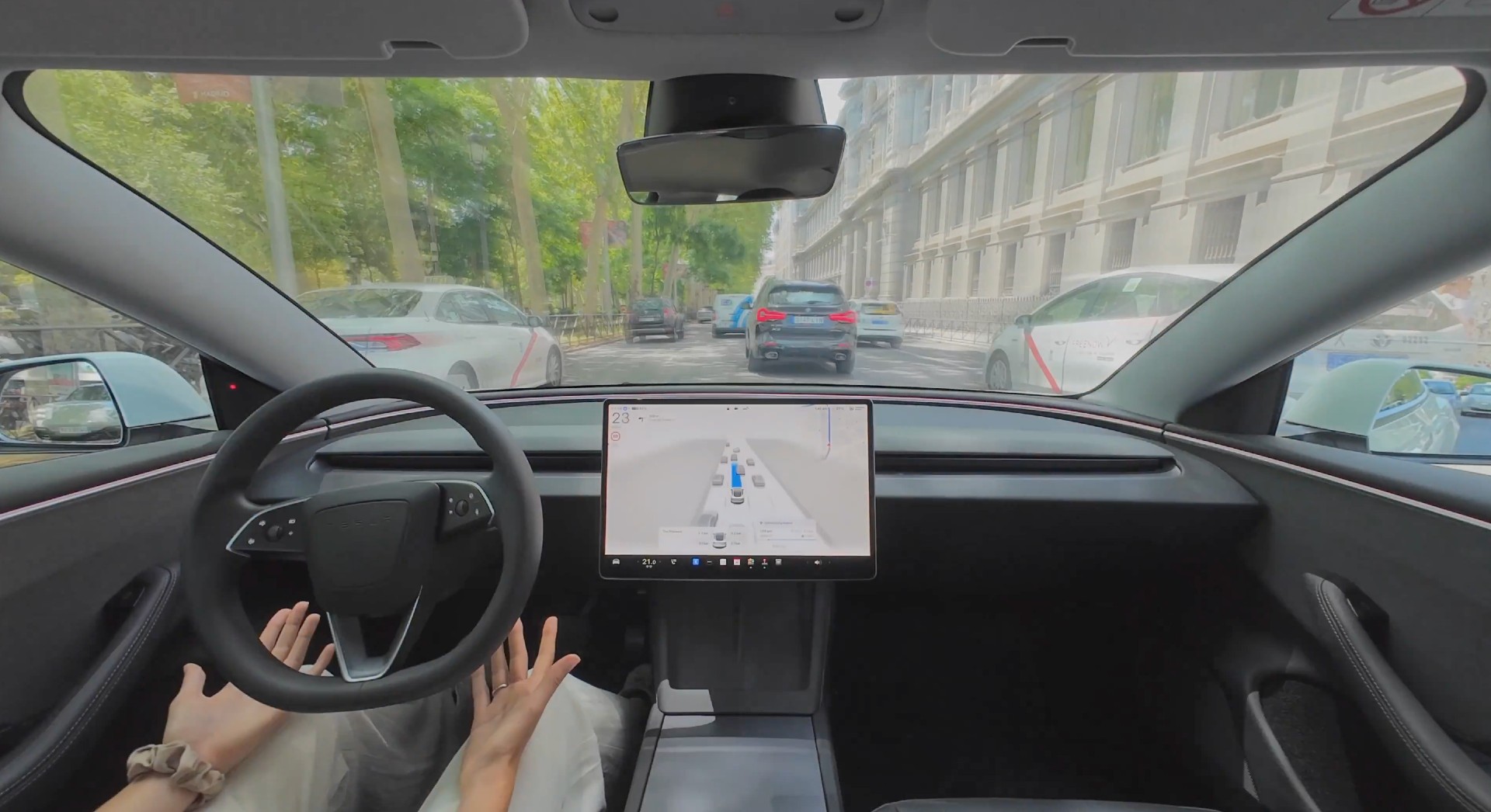
Tesla (NASDAQ: TSLA) stock received a price target update from Pierre Ferragu of Wall Street firm New Street Research, citing the company’s growing lead in self-driving and autonomy.
On Tuesday, Ferragu bumped his price target from $520 to $600, stating that the consensus from the Consumer Electronics Show in Las Vegas was that Tesla’s lead in autonomy has been sustained, is growing, and sits at a multiple-year lead over its competitors.
CES 2026 validates Tesla’s FSD strategy, but there’s a big lag for rivals: analyst
“The signal from Vegas is loud and clear,” the analyst writes. “The industry isn’t catching up to Tesla; it is actively validating Tesla’s strategy…just with a 12-year lag.”
The note shows that the company’s prowess in vehicle autonomy is being solidified by lagging competitors that claim to have the best method. The only problem is that Tesla’s Vision-based approach, which it adopted back in 2022 with the Model 3 and Model Y initially, has been proven to be more effective than competitors’ approach, which utilizes other technology, such as LiDAR and sensors.
Currently, Tesla shares are sitting at around $433, as the company’s stock price closed at $432.96 on Tuesday afternoon.
Ferragu’s consensus on Tesla shares echoes that of other Wall Street analysts who are bullish on the company’s stock and position within the AI, autonomy, and robotics sector.
Dan Ives of Wedbush wrote in a note in mid-December that he anticipates Tesla having a massive 2026, and could reach a $3 trillion valuation this year, especially with the “AI chapter” taking hold of the narrative at the company.
Ives also said that the big step in the right direction for Tesla will be initiating production of the Cybercab, as well as expanding on the Robotaxi program through the next 12 months:
“…as full-scale volume production begins with the autonomous and robotics roadmap…The company has started to test the all-important Cybercab in Austin over the past few weeks, which is an incremental step towards launching in 2026 with important volume production of Cybercabs starting in April/May, which remains the golden goose in unlocking TSLA’s AI valuation.”
Tesla analyst breaks down delivery report: ‘A step in the right direction’
Tesla has transitioned from an automaker to a full-fledged AI company, and its Robotaxi and Cybercab programs, fueled by the Full Self-Driving suite, are leading the charge moving forward. In 2026, there are major goals the company has outlined. The first is removing Safety Drivers from vehicles in Austin, Texas, one of the areas where it operates a ride-hailing service within the U.S.
Ultimately, Tesla will aim to launch a Level 5 autonomy suite to the public in the coming years.
Elon Musk
Elon Musk’s Biggest Revelations on AI, Robots, and the Future of Work from the Moonshots Podcast
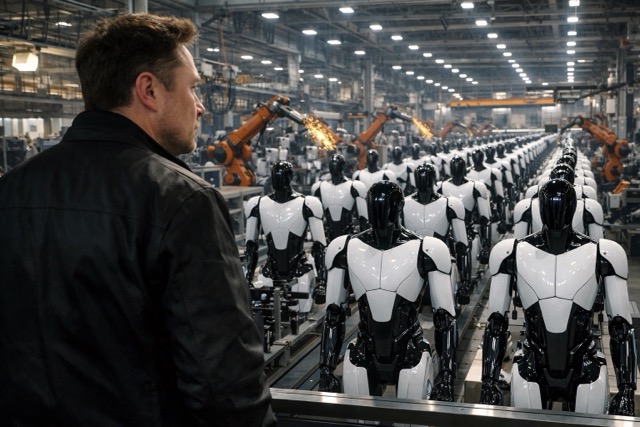
Elon Musk’s appearance on the Moonshots with Peter Diamandis podcast was packed with bold predictions, candid admissions, and surprising tech insights. The nearly three-hour conversation covered everything from artificial intelligence to humanoid robots, geopolitics, and the future of work. Here are the top 10 most intriguing takeaways:
-
Aggressive AGI Timeline Predictions
Musk offered a detailed view on when artificial general intelligence (AGI) could emerge, suggesting it may arrive sooner than many expect, emphasizing both transformative potential and risks.
-
U.S. vs. China in the AI Race
He discussed the strategic competition between the United States and China over AI development, noting that geopolitical dynamics will shape how and who leads in the next decades.
-
Future of Job Markets
Musk touched on how AI and automation could reshape employment, predicting massive boosts in productivity alongside potential disruptions in traditional work structures.
-
Clean Energy Transition
A recurring theme was the role of clean energy in future economies, with Musk reiterating the importance of scaling sustainable power generation and storage.
-
Humanoid Robots Are Coming
On the podcast, Musk elaborated on Tesla’s work on humanoid robots, hinting at timelines and applications that go beyond factories to general-purpose assistance.
-
Tesla Roadster “Last Human-Driven Car”
Outside the core discussion topics, Musk teased features of the upcoming Tesla Roadster — calling it “the best of the last of the human-driven cars” and suggesting safety won’t be its main selling point.
-
The Role of AI in Clean Energy and Robotics
Linking AI to both energy optimization and robotics, Musk explained how smarter systems could accelerate decarbonization and task automation across industries.
-
U.S. Innovation Leadership
Musk argued that maintaining American leadership in key tech sectors like AI, space, and robotics should be a national priority, with thoughtful policy and investment.
-
Job Creation vs. Job Elimination
While acknowledging automation’s disruptive effects, he also outlined scenarios where new industries and opportunities could emerge, particularly in AI, space, and advanced manufacturing.
-
Long-Term Vision for Humanity
Throughout the conversation, Musk revisited his long-term philosophical views — including a belief in humanity’s responsibility to become a multi-planetary and technologically empowered species.
Whether you agree with Musk’s optimism or not, the podcast offers a window into the thinking of one of the most influential figures in tech today, in and why his visions continue to spark debate and inspiration.
Elon Musk
Elon Musk just said some crazy stuff about the Tesla Roadster
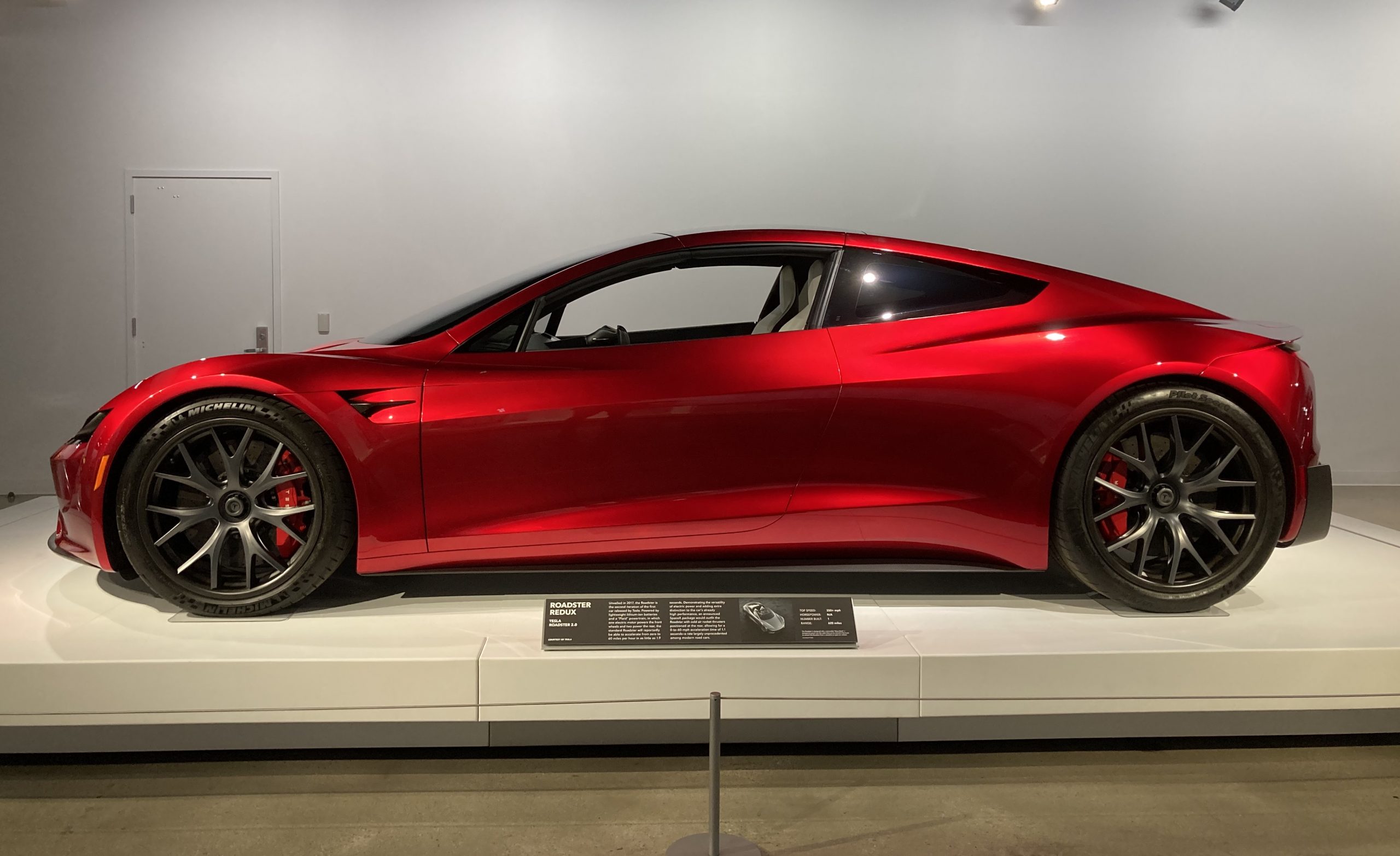
Elon Musk appeared on the Moonshots podcast with Peter Diamandis today to discuss AGI, U.S. vs. China, Tesla, and some other interesting topics, but there was some discussion about the upcoming unveiling of the Roadster, the company’s electric supercar that will arrive several years after it was initially slated for release.
Musk made some pretty amazing claims about the Roadster; we already know it is supposed to be lightning-fast and could even hover, if Tesla gets everything to happen the way it wants to. However, the car has some pretty crazy capabilities, some of which have not even been revealed.
On the podcast, Musk said:
“This is not a…safety is not the main goal. If you buy a Ferrari, safety is not the number one goal. I say, if safety is your number one goal, do not buy the Roadster…We’ll aspire not to kill anyone in this car. It’ll be the best of the last of the human-driven cars. The best of the last.”
🚨 Elon on the Roadster unveiling, scheduled for April 1:
— TESLARATI (@Teslarati) January 6, 2026
Musk makes a good point: people who buy expensive sports cars with ridiculous top speeds and acceleration rates do not buy them to be safe. They hope they are safe in case of an emergency or crash, but safety is not at the forefront of their thoughts, because nobody buys a car thinking they’ll crash it.
The Roadster is truly going to push the limits and capabilities of passenger vehicles; there’s no doubt about that. Tesla plans to show off the new version car for the first time on April 1, and Musk has only hinted at what is possible with it.
Musk said back in November:
“Whether it’s good or bad, it will be unforgettable. My friend Peter Thiel once reflected that the future was supposed to have flying cars, but we don’t have flying cars. I think if Peter wants a flying car, he should be able to buy one…I think it has a shot at being the most memorable product unveiling ever. [It will be unveiled] hopefully before the end of the year. You know, we need to make sure that it works. This is some crazy technology in this car. Let’s just put it this way: if you took all the James Bond cars and combined them, it’s crazier than that.”
Production is set to begin between 12 and 18 months after the unveiling, which would put the car out sometime in 2027. Hopefully, Tesla is able to stay on track with the scheduling of the Roadster; many people have been waiting a long time for it.

